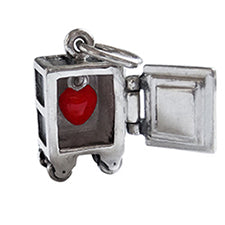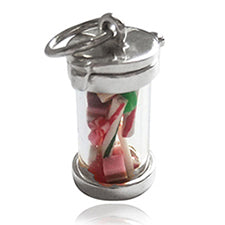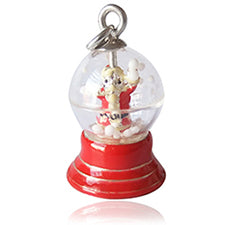History of Charms

Charms have been worn for thousands of years, not just for their decorative appeal, but often to symbolise good luck, love and spiritual forces. The earliest charm bracelets were worn by the pharaohs of ancient Egypt, who believed that they would pass with them into the afterlife. Knights of the Middle Ages wore charms on their belts to identify their status and ancestry and, during the sixteenth century, talismans would frequently be carried into battle to ward off evil and bring good fortune to their owners, or harm to their enemies.
During the less superstitious age of the Renaissance, charms were favoured only by the lower classes and their popularity wasn't to fully recover until the reign of Queen Victoria, who invented the charm bracelet as we now know it and whose appreciation of these jewels quickly spread throughout European nobility. Victoria's preference was for decadent gemstone charms and lockets containing the hair or tiny photographs of loved ones. Such was her fondness of these tiny treasures that, to celebrate each new year, she had charms created to give to her family and friends.
Charms continued to flourish throughout the subsequent decades as a very popular form of jewellery. World War I soldiers would take with them good luck charms, in particular the popular 'Fums Up' design, a tiny child's figure with a wooden head to be rubbed when challenges were faced (by Britons/Americans who believed the touching/knocking on wood fended off bad luck). And, popular among World War II troops returning home were handcrafted trinkets from the regions where they had been stationed. Most glamorous, however, were probably those created for the silver screen goddesses of the 1940s and '50s, who would accessorise their couture with charm bracelets frequently made of the most extravagant of materials such as platinum and diamonds.
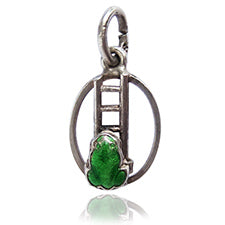
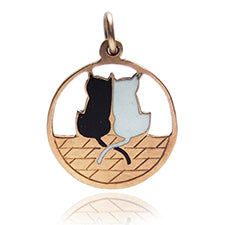
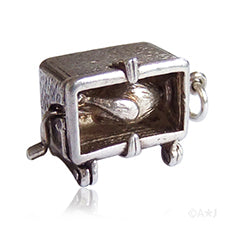

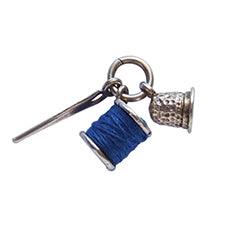
Vintage charms are of particular interest to us and we dedicate a great deal of time to sourcing those produced by celebrated makers, as well as the occasional unattributable antique that piques our interest. New York jeweller, Walter Lampl had a particular fondness for charms, which were well known for their extraordinary workmanship and detail. His 1956 catalogue contained 750 different charms that catered for almost every interest and pastime, but most famous are probably the love tokens that Walter created for his wife, Sylvia, using sterling silver or 14K gold and often decorating them with enamelwork and precious stones such as rubies, sapphires and pearls. Walter Lampl was renowned for his kindness, respectful relationships and for taking very good care of his large staff. Tragically, on Christmas Eve 1945, at the age of 50, Walter Lampl died of a heart attack in front of all his devoted employees for whom he was hosting an annual party; Walter Lampl Inc subsequently ceased trading in 1959, when Sylvia Lampl decided that she couldn't bare the prospect of relinquishing control of her beloved husband's legacy to someone outside of the family.
The English Thomas L Mott Company (TLM) was probably most famous for its butterfly wing jewellery that was popular throughout the Art Deco period, but its travel related souvenir charms, many with vibrantly coloured enamelwork, were highly desirable throughout the 70s, when charms were enjoying something of a renaissance following a rather quiet decade. However, Beaucraft (also known simply as 'Beau') reported that charms were their best selling jewellery throughout their 57 year operation, which ended in 2004. The company had a reputation for originality of design and employed a large team of sales representatives to supply these most novel of creations from their Rhode Island factory to jewellers and department stores far and wide.
Other highly collectable charm names are Nuvo and CHIM, British companies that operated from the 1950s to the 70s/80s. Both produced a wide variety of enchanting and intricate designs in both silver and gold, often with mechanical/hinged parts, gems set into them or enamelwork. Another prolific producer of charms, from 1957 to '64, was the American company Wells Sterling, which also traded as Top Hat - some of their charms are stamped with both the Wells hallmark and a top hat - and their catalogues from the period are now as highly prized as the items listed in them.
Never has there been such a wonderful choice of charms as exists today and they are now most commonly collected to commemorate trips, milestone birthdays, anniversaries and significant achievements. Charm collections accumulated over time are a joy to behold and a bracelet with just two or three significant charms makes an excellent gift, to be added to with each birthday, Christmas or significant event in the life of the recipient. A charm bracelet can be a lifetime in the making, ultimately serving as an autobiographical artwork to be treasured for generations.
